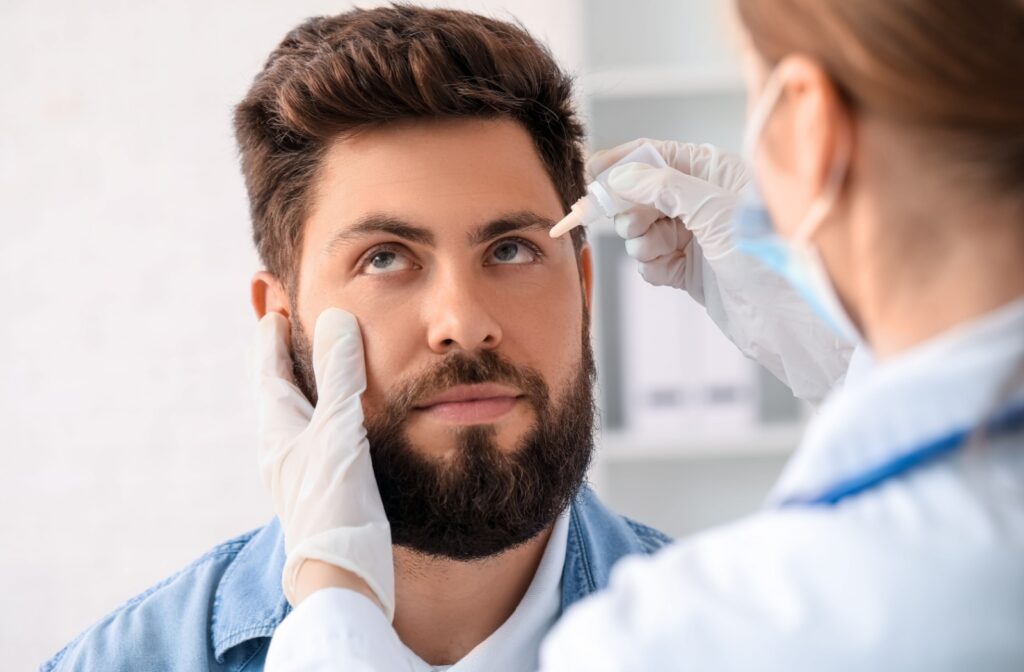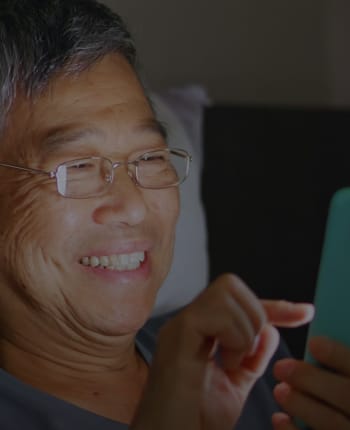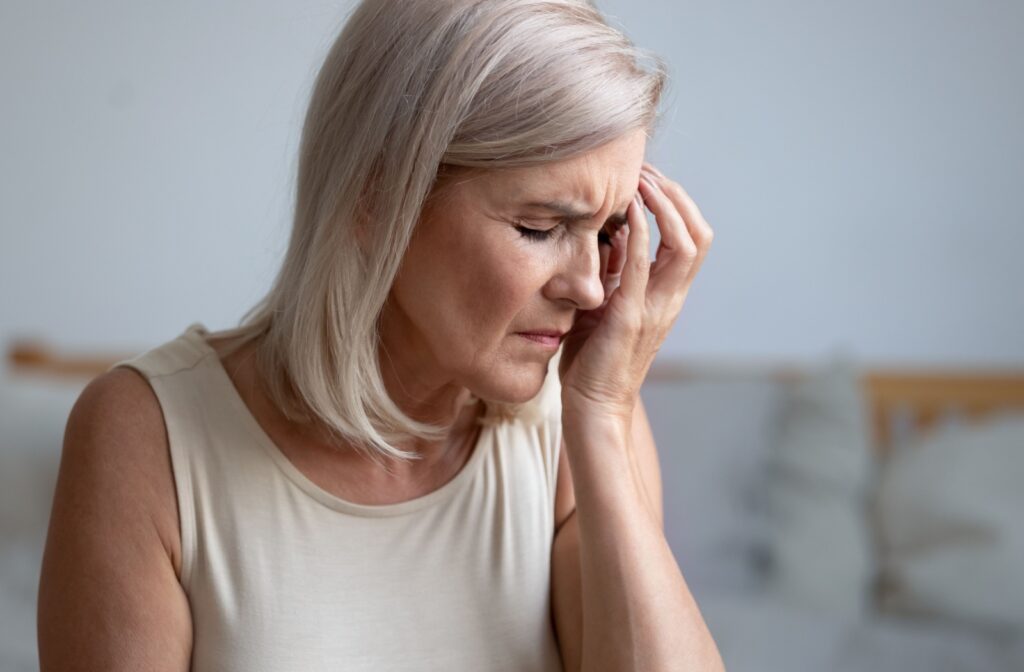Most people think of dry eye as something that affects both eyes equally. But if one eye feels gritty, irritated, or unusually dry, you’re not imagining it, and you’re not alone.
Dry eye can absolutely affect just one eye, and it’s often linked to anatomical differences, environment, or specific eye conditions.
Recognizing the potential causes behind single-eye dryness can help you better understand how your tear film works and what might be disrupting it.
What is Unilateral Dry Eye?
Dry eye occurs when your eyes don’t produce enough tears or when the tears evaporate too quickly. While bilateral dry eye (affecting both eyes) is more commonly discussed, unilateral dry eye affects only one eye and can be just as uncomfortable and problematic.
The tear film consists of three layers: an oily outer layer, a watery middle layer, and a mucus inner layer. When any of these layers becomes compromised in one eye, it can lead to dry eye symptoms affecting just that eye.
Symptoms of unilateral dry eye include:
- Persistent dryness in one eye
- Grittiness or foreign body sensation
- Redness and irritation
- Blurred vision that clears with blinking
- Excessive tearing (a reflex response to dryness)
- Light sensitivity
Common Causes of Single-Eye Dryness
Dry eye and single-eye dryness can be the result of a range of factors. Here are a few potential causes:
Anatomical Differences
Your eyes aren’t perfectly symmetrical, and small anatomical differences can affect tear production and distribution. One eye might have slightly different eyelid positioning, tear duct size, or blinking patterns that make it more prone to dryness.
Blocked Tear Ducts
A blocked or partially blocked tear duct in one eye can prevent proper tear drainage, leading to either excessive tearing or, paradoxically, dry eye symptoms. This blockage can occur due to infection, inflammation, or structural abnormalities.
Medication Side Effects
Some medications can cause dry eye as a side effect, and the effect might be more pronounced in one eye due to individual variations in how your body processes the medication. Common culprits include antihistamines, decongestants, antidepressants, and blood pressure medications.
Environmental Factors
Uneven exposure to environmental irritants can cause single-eye dryness. For example, if you frequently drive with the window down on one side, that eye may experience more wind exposure and subsequent dryness. Similarly, sleeping with one eye closer to a fan or air conditioning vent can affect tear film stability.
Medical Conditions That Can Cause Unilateral Dry Eye
Some medical conditions can cause dry eye symptoms in just one eye, especially if they affect tear production, eyelid function, or ocular surface health on one side more than the other.
Here are some common causes:
- Meibomian gland dysfunction (MGD): The meibomian glands produce the oily layer of the tear film. If these glands become blocked or function poorly in one eye, it can lead to rapid tear evaporation and dryness that is more noticeable on that side.
- Blepharitis: This inflammation of the eyelid margins can disrupt the tear film. When blepharitis is concentrated in one eye, it often results in localized irritation and dryness.
- Previous eye surgery or trauma: Surgeries like LASIK or cataract procedures, or injuries to one eye, may temporarily or permanently affect tear production or distribution, contributing to dry eye symptoms that don’t affect the other eye.
- Bell’s palsy: This condition temporarily weakens the facial muscles on one side. If it affects eyelid closure or blinking, the eye can become dry from poor tear distribution.
- Sjögren’s syndrome: Although typically bilateral, this autoimmune condition can sometimes begin with uneven symptoms, causing one eye to feel significantly drier than the other during early stages.

Contact Lens-Related Causes
Contact lens wear can contribute to unilateral dry eye, especially if:
- One lens fits differently than the other
- You have a damaged or dirty lens in one eye
- You’re experiencing an allergic reaction to lens material or solution in one eye
- Poor lens hygiene affects one eye more than the other
Even experienced contact lens wearers can develop dry eye symptoms in just one eye due to changes in lens fit, eye shape, or tear production over time.
Treatment Options for Unilateral Dry Eye
Treatment depends on the underlying cause, but the following options can be done to help improve dry eye symptoms:
- LipiFlow® thermal pulsation therapy: Gently warms and massages the meibomian glands to clear blockages and restore healthy oil flow, targeting evaporative dry eye at the source.
- BlephEx® eyelid exfoliation: A comfortable in-office procedure that removes bacterial debris and biofilm from the eyelid margins, helping manage blepharitis-related dry eye.
- Punctal plugs: Punctal plugs are tiny biocompatible devices inserted into the tear ducts to slow tear drainage, helping keep the eye surface moist and relieve dry eye symptoms.
- Prescription eye drops: Medications may be recommended to reduce inflammation or support tear production in more severe or persistent cases.
Prevention Strategies
While you can’t prevent all causes of unilateral dry eye, several strategies can help reduce your risk:
- Stay hydrated by drinking plenty of water
- Use a humidifier in dry environments
- Take regular breaks from computer screens (follow the 20-20-20 rule)
- Protect your eyes from wind and dust
- Remove eye makeup thoroughly each night
- Replace contact lenses as recommended
Don’t Ignore Single-Eye Symptoms
Dryness in one eye may seem minor, but it can point to specific issues that deserve attention. If you’re experiencing ongoing irritation or discomfort, it’s time to take action. Schedule an appointment with Total Vision Financial District for an evaluation and personalized dry eye treatment options.



